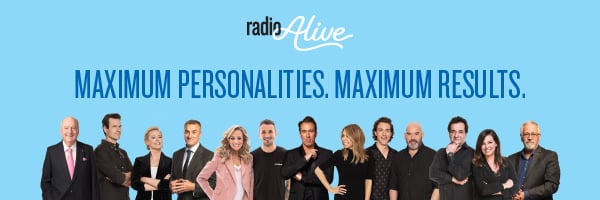Radio Tomorrow with James Cridland
Something called BBC Notes was posted on the BBC’s Research and Development blog the other week. It’s a web app “that shows text, images, and links, to enhance the listening experience during live events, live broadcasts, and on demand”.
There are quite a lot of these types of thing appearing. Entale is a podcast app which is trying to do the same – when you listen to, say, Serial then you see the places they’re talking about, and maps, and links to discover more and all of that kind of thing. (It does very well in podcasts about beauty products, I’m told, where you can click stuff to buy).
At Podcast Movement I saw the Adori platform, which does the same kind of thing. It has a nice backend, allowing quick and easy addition of this data into a podcast, and some secret sauce in terms of how it adds the data into the audio file. Secret enough for them not to tell me, anyway.
It isn’t, of course, the first time this has been thought of. Fifteen years ago, I was playing with Nokia Visual Radio, which aimed to add visual augmentation to live radio. I found some screengrabs of it, if you want to take a peek.
There’s also DAB Slideshow, a method of adding an image to broadcasts, used by many different radio stations across the world (here’s a few examples).
There’s a few issues, I think, with all these types of services.
First – is it a rich enough experience? Does it add to the user’s enjoyment of the audio? Would it hold their attention, or offer interesting glanceable content?
Second – is it easy to produce quick visuals at scale, and ideally automated? If it is, does it fulfil the first requirement – that it’s good enough? If I’m broadcasting something about the town of Ilminster in Somerset, is it acceptable to just link to the Wikipedia article about Ilminster; and does anyone find that useful anyway?
…and third – does this give enough value to fundamentally change the user’s experience with audio content? If the benefit of audio is that you can enjoy it while you’re driving, or walking the dog, or writing another column for a website – isn’t this a benefit we should be making the most of, and not diluting with visuals?
Some people are doing this really well – Radio 538 in the Netherlands plays music videos and has a full TV-like experience that doesn’t appear to get in the way of the audio. But when it’s static images that demand interaction, that seems less exciting to me.
Perhaps we should play to our strengths, otherwise – in this most rarest of cases – video might kill the radio star.
About The Author
James Cridland, the radio futurologist, is a conference speaker, writer and consultant. He runs the media information website media.info and helps organise the yearly Next Radio conference. He also publishes podnews.net, a daily briefing on podcasting and on-demand, and writes a weekly international radio trends newsletter, at james.crid.land.




The author's link to "a few examples" shows pictures currently transmitted by DAB+. Similarly DRM+ has the capability of sending text and pictures. They are examples of pushing (one way) communication and no interaction. I have illustrated elsewhere on this site the necessity for such information to be up-to-date and whether the broadcaster is willing to provide such textual and graphic services. It may be fine for weather and music information as per example photos because such a service can be automated.
I gave the analogy of the Seven Network abandoning its Teletext service 20 years ago because people can use the web.
Then there's the situation where most DAB+ radio units do not have a graphic display. Even basic DRM receivers don't have graphics.
The idea of user interaction of downloading a product or podcast or purchasing a product or podcast or a hyperlink to a website connotes that DAB+ and DRM receivers: (i) have to have software at the tx and rx updated to permit embedded 'html' or 'php' or 'jsp' pages and hyperlinks and (ii) the DAB+ and DRM receiver be connected to the internet via a 'cable' or part of a 3G/4G/5G internet service.
I can see a quirk with graphically-enhanced and embedded-link-enhanced if such technology is available on a mobile phone. It would be totally useless to transmit QR codes if your source of broadcast is on your mobile phone and you cannot take a photo of the QR code with the mobile phone's camera.
Just a thought,
Thank you,
Anthony of exciting Belfield.